Introduction
API testing, a crucial element in software development, ensures that application programming interfaces (APIs) deliver on their promises of functionality, performance, and security. APIs serve as the building blocks of software, allowing different applications to communicate and execute tasks effectively. Companies like TotalEnergies Digital Factory rely on API testing to ensure the robustness and reliability of their solutions.
Regular API testing is essential to identify and address vulnerabilities before they become critical problems. As the digital landscape evolves, API testing becomes increasingly critical to maintain the reliability and efficiency of software applications. In this article, we will delve into the importance of API testing, explore different API protocols, discuss best practices, and provide tips and tricks for beginners.
Whether you are a seasoned developer or new to the field, this guide will equip you with the knowledge and tools to optimize API testing and maximize the performance of your digital solutions.
What is API Testing?
API testing stands as a pivotal element in the tapestry of software development, tasked with ensuring that application programming interfaces (APIs) deliver on their promises of functionality, performance, and security. It's a process akin to quality assurance for the building blocks of software, where APIs must prove their ability to effectively communicate and execute their intended tasks within a system.
At companies like TotalEnergies Digital Factory, API testing is the linchpin in their digital transformation, ensuring that over 80 solutions developed across 25 countries remain robust and reliable. Their approach, much like venturing into unknown domains, involves a meticulous examination of the API's 'attack surface'—the potential points of failure where the API interfaces with other systems.
The necessity for such testing is echoed in the historical progression from Fordism to our current digital age, where the integrity of mass-produced items was paramount. Today, that same principle applies to software, where a single misstep in API functionality can result in operational disruptions and considerable financial loss, as was the case with a critical microservice interacting with a third-party API which, upon exceeding request limits, triggered a cascade of issues.
This is precisely why regular API testing cycles are crucial. They serve as a preventive measure, allowing us to identify and address vulnerabilities before they manifest as critical problems. As the digital landscape rapidly evolves, with software intricately woven into the fabric of our daily lives, the role of API testing becomes ever more critical.
It ensures that the software remains a reliable and efficient conductor of the myriad tasks it performs, from the simplest mobile application to the most complex enterprise system.
Why is API Testing Important?
API testing is a linchpin in the realm of software development, serving as the gatekeeper for quality and stability. By meticulously examining application programming interfaces, developers can identify discrepancies between expected and actual outcomes, ensuring that the software performs optimally across various scenarios. This critical process not only seeks out bugs and defects, from minor syntax errors to complex logical issues, but also assesses performance and security aspects before these potential problems can escalate.
Case studies, like the experience of Chick-fil-A's Customer Technology team, underscore the significance of API testing. The team grappled with poorly documented or implicit API contracts, causing extensive cross-team collaboration just to interact with the APIs. The revelation from this scenario is the necessity for clear, well-defined API contracts to streamline development and reduce bottlenecks.
Reflecting on the evolution of technology, from the era of Fordism's mass production to today's digital immediacy, the need for rigorous software testing has only intensified. APIs are the backbone of our digital experiences, and their malfunction can result in substantial financial losses. Thus, regular and thorough API testing is not just a precaution; it's an imperative measure in the lifecycle of software development.
Moreover, contemporary anecdotes, such as the performance challenges faced by an unnamed app with numerous features, illustrate the importance of targeted testing. These real-world examples bring to light the practical benefits of API testing - pinpointing specific areas for improvement, rather than attempting to fix everything at once, which can be an endless and unproductive task.
In conclusion, API testing stands as an essential practice that upholds the integrity and efficiency of software applications, delivering seamless experiences to end-users and saving valuable time and resources for developers.
Types of API Protocols
APIs, the critical enablers of communication between different software applications, come in several protocols, each with unique characteristics catering to specific needs. REST (Representational State Transfer) offers a lightweight, stateless architecture, making it a preferred choice for web services. SOAP (Simple Object Access Protocol), with its rigid set of messaging protocols, provides a higher level of security, essential for confidential data transactions.
GraphQL, a new contender, allows clients to request exactly the data they need, reducing bandwidth usage and improving performance. These protocols, among others, form the backbone of our digital ecosystem. By understanding their distinct features, developers can ensure robust API testing, leading to more secure and efficient applications.
In the digital age, where APIs underpin our software experiences, the need for systematic API testing has never been more pressing. With the complexity of modern software systems, regular inspection of APIs is crucial to maintain their stability and security. The testing process not only verifies correct functionality but also evaluates performance and security, areas increasingly exploited by cybercriminals.
Recent reports indicate that 78% of cybersecurity teams have faced API-related security incidents within a year. This statistic underscores the importance of comprehensive API testing to safeguard digital assets against sophisticated attacks.
The testing cycle, the interval between API tests, is flexible and can be adjusted based on real-world needs. As the digital landscape evolves, so too must our approaches to API testing, ensuring that these vital components remain reliable conduits for seamless data exchange and system integration.
Looking ahead, a series of articles will delve into API testing, offering insights into automated frameworks and key concepts that support the development of secure, reliable APIs. From understanding the basics of API communication to advanced testing strategies, these articles will serve as a valuable resource for developers seeking to master API testing and optimize the performance of their digital solutions.
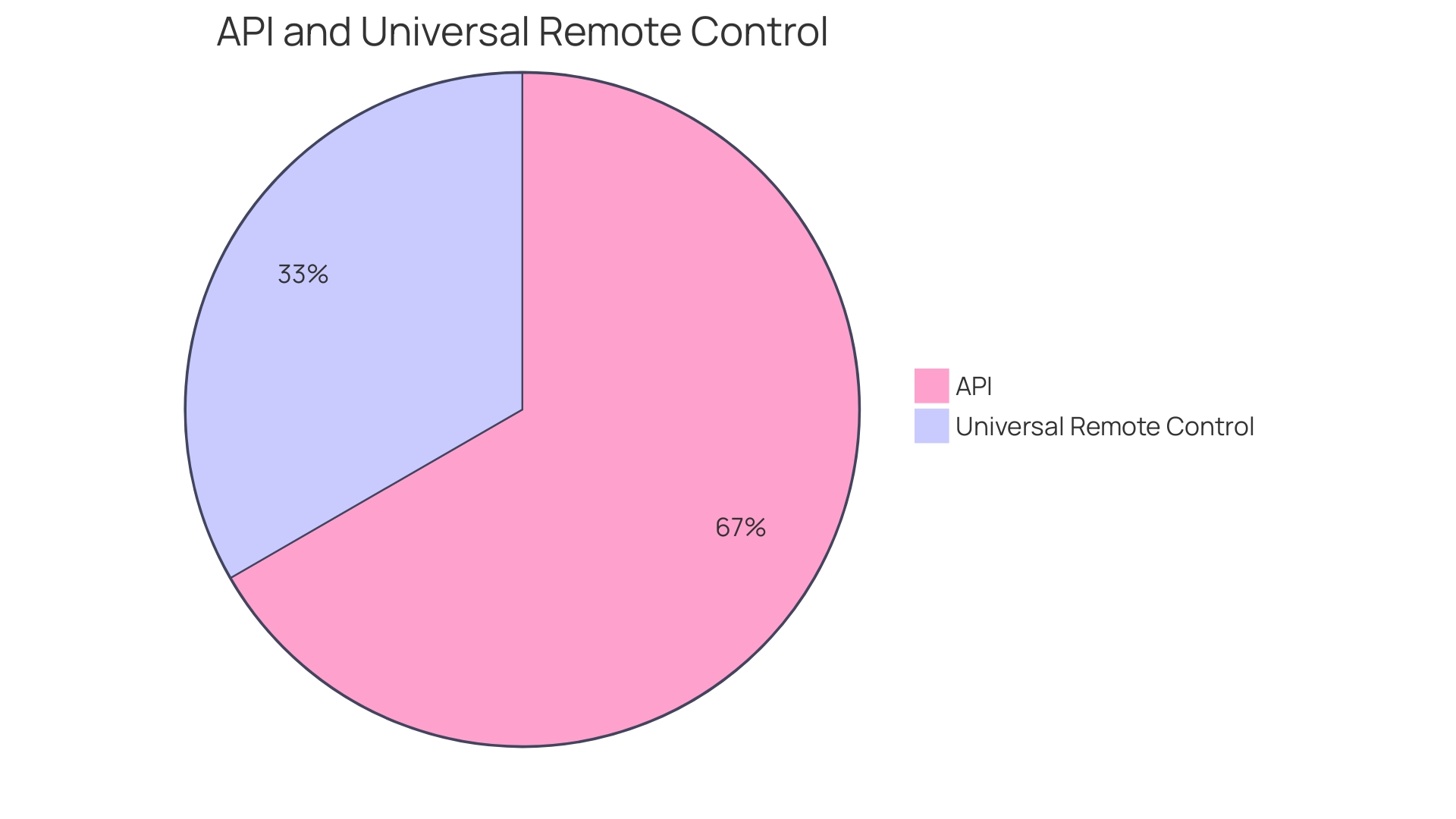
API Testing Basics
Understanding the core elements of API testing is foundational for any developer looking to ensure their applications communicate effectively with other systems. An API, or Application Programming Interface, acts as a rulebook for establishing this communication. It's like a contract between different software programs, dictating how they converse with each other.
For instance, consider a timesheet application that provides an API requiring an employee's name and date range to fetch work hours; this API serves as a bridge between the user interface and the server, processing requests and returning valuable data.
API testing zeroes in on checking if these APIs are up to the mark in terms of functionality, reliability, and security. It's a vital practice in today's digital world to avoid data breaches and maintain seamless service integration. Given the complexity of digital systems, the role of APIs has become more prominent, with nearly 90% of developers leveraging them in their workflows.
As such, understanding the fundamentals—endpoints, requests, responses, status codes, and payload formats—is not just beneficial but necessary for ensuring that your APIs stand up to rigorous use and meet the high standards required for today's interconnected applications.
Tools for API Testing
API testing is a critical component in ensuring the smooth functioning of the software applications we rely on daily. By regularly evaluating these application programming interfaces, we maintain their stability and security, making our digital lives more convenient. To aid in this process, there are several tools designed to streamline API testing, each with its own set of features and benefits.
Postman stands out as a user-friendly option that simplifies the creation, testing, and management of API requests. Its intuitive interface makes it accessible for both novices and seasoned developers, allowing for easy interaction with APIs.
To understand how API testing works, consider an API as a backstage pass allowing different software applications to communicate. Creating test scripts that send HTTP requests to APIs is like having a conversation, where responses are analyzed and compared to expected outcomes. These scripts can then be executed routinely or as part of CI/CD pipelines to ensure continuous quality assurance.
Recent research underscores the importance of API testing, revealing that 78% of cybersecurity teams have faced API-related security incidents in the past year. This highlights the necessity for robust testing tools that can safeguard APIs, which are often targeted by cybercriminals due to inadequate security measures. With tools like Apidog, teams can not only test but also manage API documentation collaboratively, ensuring that all aspects of API performance are monitored and optimized.
When choosing an API testing tool, it's essential to consider the specific needs of your project and team. Whether it's the comprehensive testing capabilities of Postman or the collaborative features of Apidog, the right tool can make a significant difference in maintaining the quality and security of your software.
Step-by-Step Guide to API Testing
Discovering the essential steps in API testing is akin to navigating a complex digital landscape, ensuring that the software's backbone—Application Programming Interfaces (APIs)—is robust and secure. Begin with test planning, where you strategize to understand the API's functionalities and potential vulnerabilities. Your 'map' here comprises the API's attack surface and the scenarios likely to be encountered.
The creation of test cases follows, where you craft detailed scenarios that cover various API functions, including edge cases that might go unnoticed. This phase is crucial for predicting potential failures and ensuring the API can handle unexpected inputs or conditions.
Moving on to test execution, employ tools like Postman, renowned for its user-friendly interface, to automate this process. API Automation Testing involves programmatically executing these cases to validate that the APIs operate as intended, meet performance benchmarks, and maintain security protocols.
Lastly, analyzing the test results helps you understand the API's behavior under different conditions. This analysis not only identifies weaknesses but also informs developers of changes needed to enhance API reliability and performance. By applying these systematic testing steps, you ensure that the APIs—vital for seamless software integration—remain efficient and secure in the ever-evolving digital realm.

API Testing Methods
APIs are essential connectors that enable diverse software systems to interact, laying the groundwork for seamless service integration and data exchange. With the increasing reliance on technological interconnectivity, APIs have become pivotal in modern software architecture. To guarantee their reliability and security, various API testing methods are employed.
Black-box testing, for instance, assesses the system without internal knowledge, focusing on input and expected output. White-box testing delves into the internal structures, requiring a deep understanding of the code. Boundary value analysis is another technique, which tests the limits of API inputs to ensure they handle data correctly at edge cases.
Recognizing the significance of each method is crucial. Automated API testing, using tools like Cypress, Rest Assured, and Python, can send requests to APIs, evaluate responses against predetermined criteria, and affirm that the API meets its outlined requirements. This automated process allows for more frequent and accurate testing, accelerating development cycles and bolstering performance standards.
The culmination of these practices ensures that APIs perform as intended, thus maintaining the integrity and efficiency of the systems they support. By understanding and applying these testing techniques, developers ensure that their APIs can sustainably manage user demands and perform efficiently, enhancing the overall user experience.
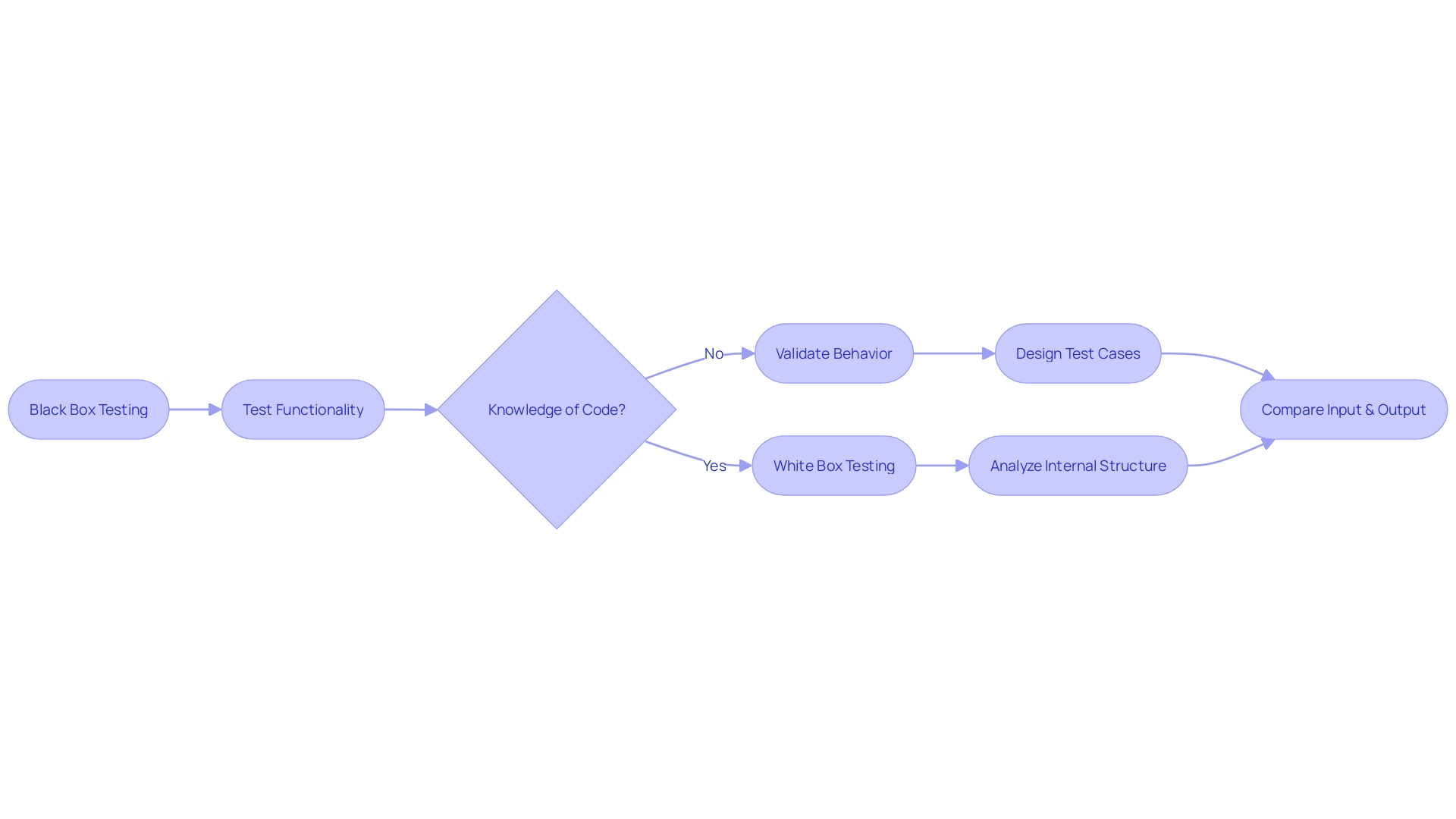
How to Test Different API Methods
Understanding and testing the various methods of Application Programming Interfaces (APIs) is essential in ensuring that digital systems communicate efficiently and reliably. APIs operate as the conduits between different software components, making them indispensable in today's interconnected digital environment. Each API method, such as GET, POST, PUT, DELETE, etc., serves a distinct purpose and, consequently, necessitates a tailored approach to testing.
API testing is more than just a technical necessity; it's a safeguard for the user experience. For instance, consider a streaming platform where the speed at which a movie begins after a user clicks on it is crucial. API performance testing, therefore, becomes integral to maintaining an uninterrupted streaming experience.
It involves assessing the speed and efficiency of the API to handle the load, which is vital to satisfy growing user bases and increased demand.
In practice, the process of API testing involves examining the endpoints, methods, and responses to ensure they function as intended. It's akin to conducting a health check on the software's building blocks, focusing on the business logic layer to guarantee accurate and secure data exchange. Tools like Postman have become popular among developers and testers for their user-friendly interfaces and comprehensive feature sets, which aid in API test automation.
The objective of API testing is to evaluate the responsiveness and resource efficiency of your APIs, thereby enhancing overall performance. It also involves load testing to see how the API behaves under varying levels of demand, which provides insights into scalability and stability. By integrating the testing process into continuous integration workflows, such as using Github Actions, the cycle of API testing can be automated and refined.
Regular inspection and evaluation of APIs are crucial in the digital age, where APIs play a pivotal role in making our digital lives more convenient. The interval between tests, or the testing cycle, can be flexibly adjusted based on the application's needs, ensuring that any issues are promptly addressed. As the digital landscape evolves, the robustness of APIs will continue to be a key factor in the seamless operation of software systems.
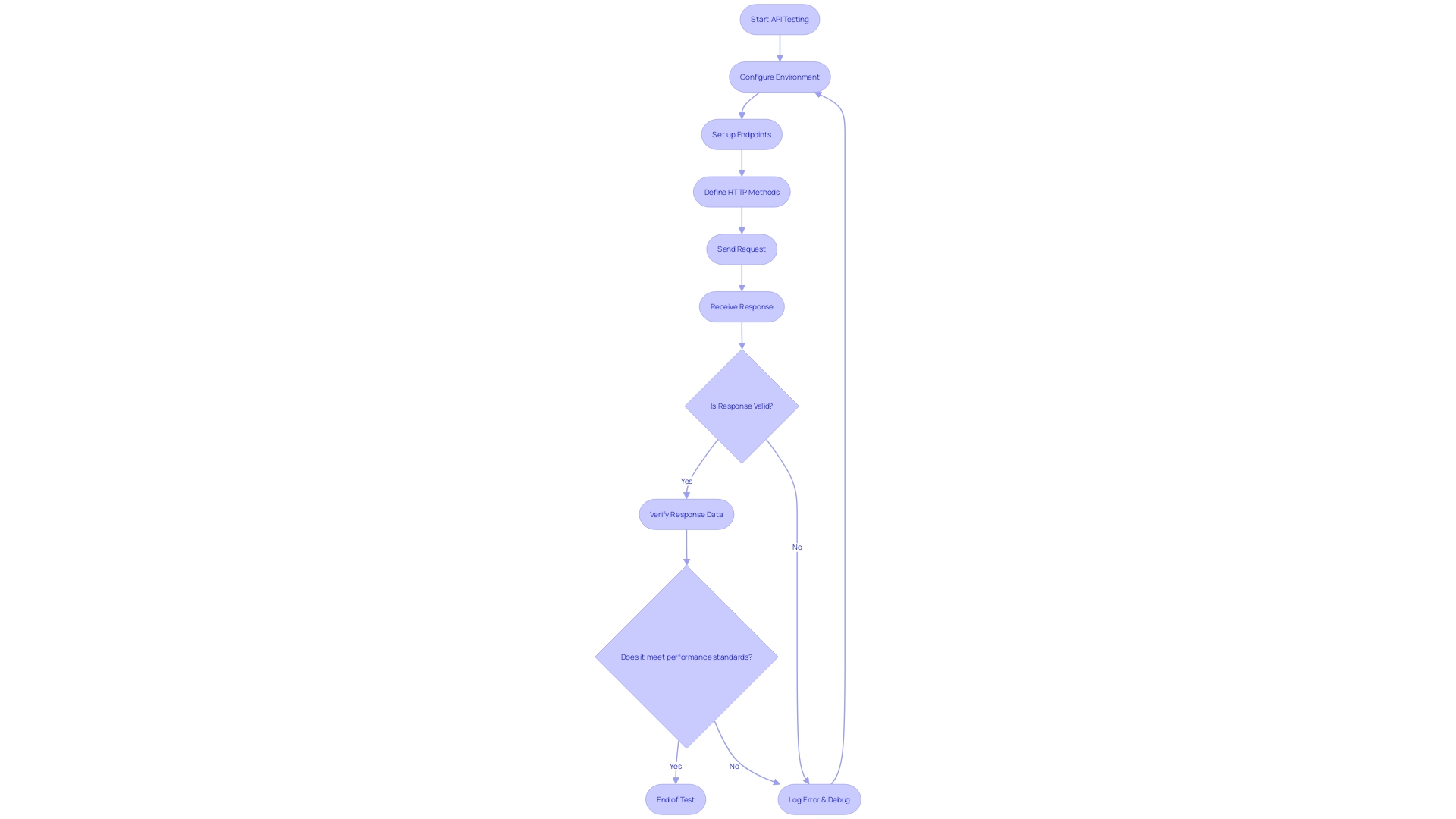
Setting Up an API Test Environment
Crafting a robust API test environment is a fundamental step in ensuring the reliability and security of your application's interfaces. Careful configuration of test servers is necessary to create a scenario that mirrors the production environment, allowing for a more accurate assessment of the API's performance under real-world conditions. The management of test data is equally critical, as it must reflect actual usage to effectively gauge the API's behavior and output.
Stability within the test environment is essential to maintain consistency across tests, which is particularly important given that 78% of cybersecurity teams have faced API-related security incidents in the past year.
A meticulous approach to setting up your API test environment involves not only the technical configurations but also understanding the significance of APIs in today's digital landscape. They are the linchpins that enable seamless interaction between disparate software systems, carrying our digital interactions without interruption. With such a vital role, the maintenance and upkeep of APIs through regular testing cycles become indispensable.
Automation in this context is not merely a convenience but a necessity to keep up with the speed of demands, as manual testing simply cannot match the efficiency and consistency of automated processes.
By integrating automated testing tools into the development pipeline, issues can be detected and addressed expeditiously, which is essential in a time where API security incidents are on the rise. As APIs continue to be lucrative targets for cyber threats, creating a test environment that can simulate these challenges is key to fortifying your digital defenses, ensuring that your APIs can withstand the pressures of an increasing user base and the scrutiny of security requirements.
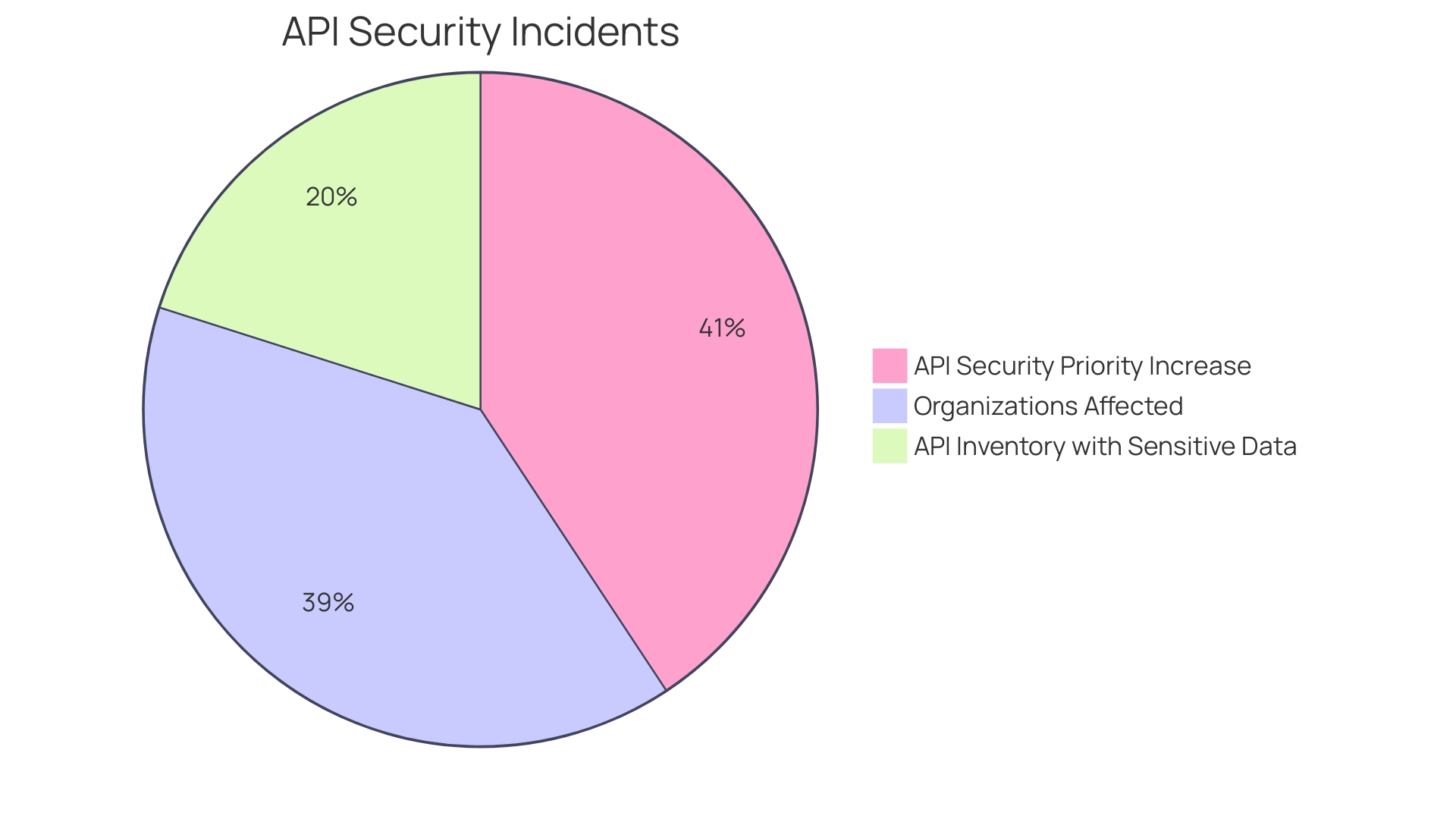
Executing API Tests
As we gear up our test environment, the next crucial step is to dive into the actual execution of API tests. This involves a systematic approach to running test cases, recording the outcomes, and pinpointing any issues that might arise. An essential part of this process is the management of test data and ensuring the repeatability of tests to validate the APIs' functionality and performance seamlessly.
Understanding the scope of what needs to be tested is the foundation of effective test automation. Leveraging the test pyramid framework, developers and QA teams can build a reliable test suite, starting from unit tests that validate individual components, to integration tests that ensure features communicate correctly with external dependencies, and finally, end-to-end tests that confirm the application operates as intended.
With the increasing incidents of API-related security breaches, it's more important than ever to ensure the APIs that form the backbone of modern software applications are robust and secure. Recent reports suggest a significant number of organizations have faced API security incidents, highlighting the need for rigorous testing.
To embark on this testing journey, tools like Postman, with its user-friendly interface, play a pivotal role. API automation testing acts as a health check for your software, ensuring the APIs work correctly and meet performance benchmarks. Python, known for its simplicity, and the pytest framework, are excellent choices for writing and executing tests due to their readability and scalability.
Emphasizing the significance of API testing, experts note that it serves as a crucial intermediary, enabling different software systems to interact seamlessly. Assessing API performance under various loads and ensuring scalability is fundamental, especially for applications with growing user bases. By conducting thorough API performance testing, developers can gain valuable insights into the responsiveness and efficiency of their software, ultimately enhancing the user experience.
Validating API Responses
API testing is a meticulous process with the goal of ensuring that APIs function correctly, which in turn contributes to the stability and security of digital systems. It is essential to validate API responses thoroughly. This involves checking response codes to confirm that an API is providing the expected outcome, whether that's a successful operation or an appropriate error message.
Data validation is another critical step, ensuring that the data returned is accurate and complete.
Schema validation is part of this process, confirming that the data structure complies with predefined schemas, thus maintaining consistency and reliability. This practice is fundamental in platforms with extensive functionality and large user bases, such as GitHub, which moved towards data-driven documentation to support its complex platform. GitHub's adoption of JSON for content and intercommunication demonstrates the significance of organized and well-managed data structures.
Consider Chick-fil-A's experience, where the lack of well-documented API contracts led to inefficiencies and the need for excessive collaboration. Proper error handling is also paramount, as it provides contextual information vital for resolving issues without exposing sensitive data. This notion is underlined by discussions in recent articles, emphasizing the need for managing problem details effectively.
From a security perspective, APIs require robust protocols and vigilant monitoring to prevent unauthorized access and attacks, especially when handling sensitive data. With the vast number of APIs that organizations use, the challenge of securing them is both significant and critical.
Accurate response validation impacts not just the functionality of a single API but also the broader API ecosystem. It contributes to better visibility of key data assets and supports integration, leading to benefits such as heightened customer satisfaction and improved productivity. In fact, a study by Vanson Bourne, titled 'The State of APIs, Integration, and Microservices,' revealed that 93% of organizations consider APIs essential and 97% believe in the synergy between APIs and microservices for optimal performance.
To ensure the reliability of APIs, a comprehensive testing plan should be developed, encompassing diverse test cases that cover various integration scenarios, including functional, performance, security, and compliance aspects. Automated testing tools and frameworks can be leveraged to enhance the efficiency of the testing process, as executing tests within the integration environment is crucial for maintaining the health and security of APIs. This proactive approach to incident management, alongside regular performance and stress testing, is the best defense against API downtime.

Common Challenges in API Testing
API testing is akin to a detailed health check-up for the digital services we rely on daily. It's a vital measure that ensures the APIs which enable our software applications to communicate are performing optimally. To achieve this, testers employ API test automation, which uses automated tools to validate the functionality, performance, and security of APIs.
In the vast ecosystem of modern software, APIs are the connectors that allow separate systems to exchange data and provide seamless services.
Effective API testing includes overcoming hurdles such as authentication protocols, managing dependencies between various software components, and navigating through rate limits that can hinder testing processes. For instance, consider the case where a streaming application needs to load a movie quickly when a user clicks on it. Testers must evaluate the API's performance and scalability to ensure that the increasing user base and demand do not negatively impact the service.
Recent statistics underscore the importance of thorough API testing, with 78% of cybersecurity teams experiencing an API-related security incident in the last year. This highlights the urgency with which organizations must prioritize API security, given that only 40% of those with a full API inventory have visibility into which APIs return sensitive data.
Moreover, automated API testing is not just about identifying issues; it's about preempting them. By programmatically sending calls to APIs and evaluating responses against predefined criteria, testers can ensure that APIs meet their requirements and function as expected.
The journey of API testing is continuous and evolves as technology advances. With the right tools and a strategic approach, you can ensure that your APIs—the very backbone of your software architecture—are robust, reliable, and ready to meet the demands of the digital world.
Best Practices for API Testing
Crafting effective API tests is a cornerstone in ensuring software reliability. Utilizing tools like Postman, with its intuitive interface and robust features, can streamline the API testing process. Automated API testing functions like a health check for software, probing the APIs—software's fundamental building blocks—to verify they are working correctly.
This form of testing, crucial for the robustness and reliability of applications, integrates into software development cycles to audit API performance, functionality, and security regularly.
To conduct API Automation Testing, one must understand the APIs' role in facilitating communication between software applications. Test scripts are then crafted to interact with the API, triggering responses for analysis against expected outcomes. Typically, these scripts employ HTTP requests to exchange data.
Executing these tests can be scheduled or integrated into Continuous Integration/Continuous Deployment (CI/CD) pipelines, fostering enhanced development agility.
The digital age's dependency on APIs necessitates regular maintenance and testing to safeguard their stability and security. API tests should be tailored to the software's needs, with flexible testing cycles to adapt to different scenarios. Given the escalation in API breaches and their potential to expose sensitive data, rigorous testing is indispensable.
Breaches not only compromise personal and financial information but can also damage businesses through fraudulent activities or identity theft.
Therefore, the best practices for API testing involve constructing well-designed test cases, managing test data effectively, and leveraging test automation to ensure comprehensive coverage. Error handling and performance testing are also integral to preemptively address potential shortcomings. Adhering to these practices not only fortifies the software against security threats but also enhances its overall performance, ensuring a seamless user experience.
API Test Automation Strategies
Automating API tests transforms the process of ensuring that Application Programming Interfaces (APIs) function seamlessly, supporting the robustness and reliability of software applications. By using tools like Postman, known for its intuitive interface and extensive capabilities, developers can programmatically execute tests, which serves as a comprehensive health check for software.
Automated API testing allows for the evaluation of APIs' reliability, functionality, and performance, playing a pivotal role in modern software development. APIs, often referred to as the 'glue' of software components, require meticulous testing to maintain the integrity of inter-application communications.
According to industry reports, 78% of cybersecurity teams have faced an API-related incident in the past year, emphasizing the need for rigorous security testing. Automated tests are executed more frequently and swiftly than manual tests, providing a significant boost in development cycles and precision.
Through the deployment of API test automation, organizations gain the advantage of detecting security flaws and vulnerabilities swiftly, addressing the alarming rise in API breaches due to inadequate security measures. As the digital ecosystem grows more complex, the implementation of automation in API testing is not just beneficial but essential for safeguarding data and maintaining software quality.
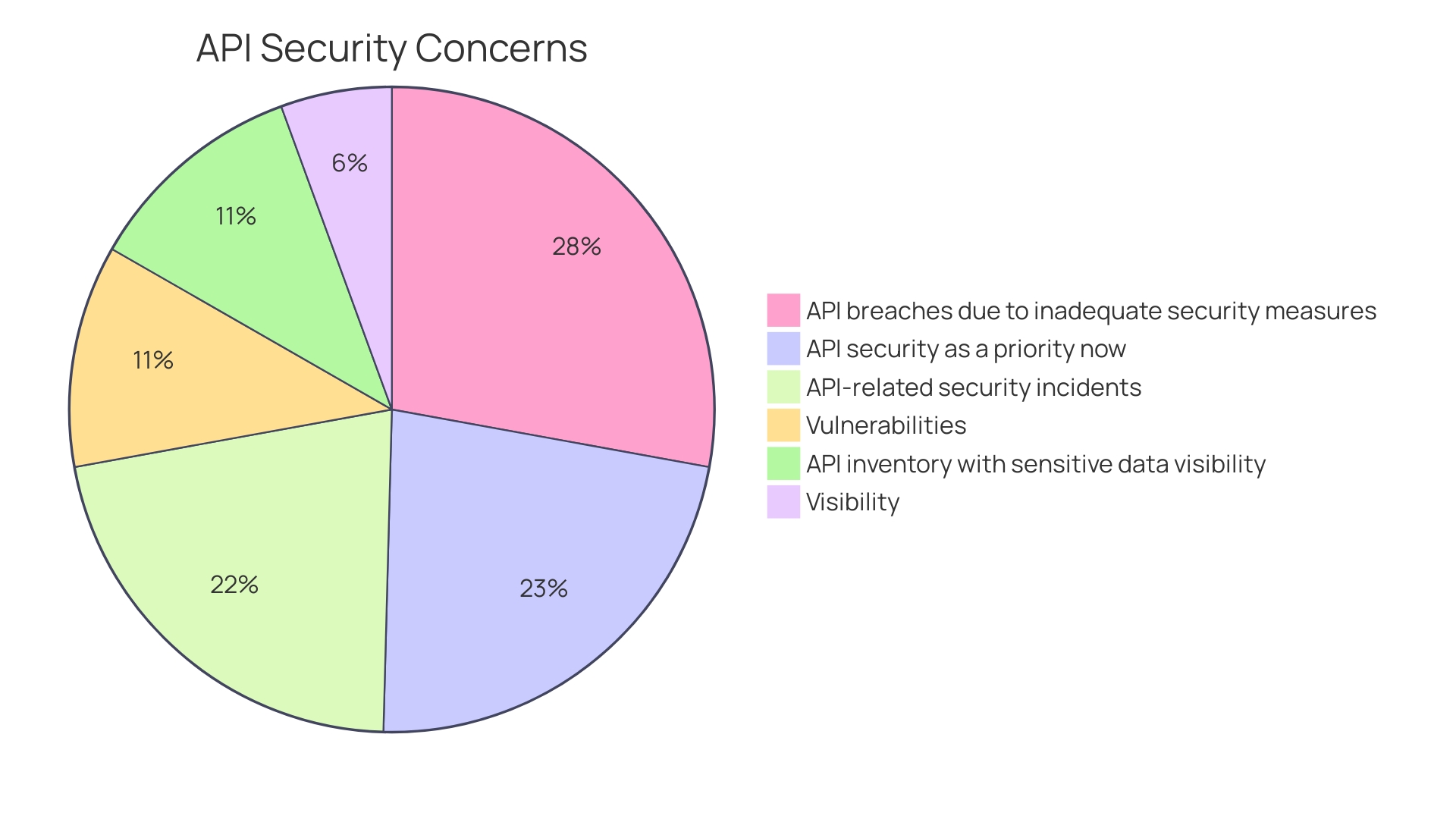
Real-World Scenarios and Examples
Embarking on API testing is like navigating a complex digital adventure, aiming to ensure the reliability and security of your software's communication pathways. Consider this insightful guide your compass in mastering API testing, where you'll tackle scenarios such as third-party API checks, multi-API integrations, and intricate API workflow handling.
APIs are the building blocks of contemporary software design, enabling systems to interconnect and share data effortlessly. The increasing dependency on APIs necessitates rigorous testing to confirm their functionality, performance, and security. Automated API testing, therefore, becomes a strategic approach to validate APIs against these criteria.
Imagine encountering an API that behaves unpredictably when presented with unexpected data types or missing fields. Automated testing can simulate such scenarios, rigorously evaluating the API's robustness. Testing tools like Postman offer extensive features for this purpose, including the construction and sending of requests, as well as the analysis of responses.
Through the lens of the test pyramid framework, we prioritize the testing hierarchy from unit tests, which isolate and verify individual components, to integration tests that examine feature interactions with external dependencies, and culminate with end-to-end tests for overall application functionality.
The importance of each test varies based on the unique needs and context of the API. Nonetheless, common tests in API testing with tools like Postman include validating request and response structures, ensuring security protocols, and checking compatibility with other systems.
Statistics underscore the pivotal role of API integration in today's digital business landscape, enabling companies to create cohesive ecosystems for seamless data exchange. By highlighting real-world examples, you'll gain practical insights into how businesses leverage API integration to streamline operations, enhance customer experiences, and scale efficiently.
As we delve into API testing, remember the words of a seasoned developer who likened skipping tests to 'testing in prod', potentially inviting disasters like the UK air traffic control incident, where incorrect data input brought operations to a standstill. It's a stark reminder of the importance of thorough testing to prevent costly errors.
In summary, this guide is not just about the mechanics of API testing. It's about embracing the mindset that thorough testing is not a 'waste of time' but rather a crucial investment in the safety, reliability, and user-friendliness of your APIs—a mindset that sees developers as the first users of Application Programming Interfaces, deserving of clear, descriptive, and accurate documentation.

Tips and Tricks for Beginners
Embarking on the journey of API testing can seem daunting for newcomers, but with the right tools and understanding, it can become an efficient and integral part of software development. Postman, a widely acclaimed tool among developers and testers, offers a user-friendly interface and a suite of features designed to streamline the API testing process. By employing Postman, beginners can significantly simplify the task of testing APIs, which are the vital communication channels between different software applications.
API testing is more than a routine check; it's a thorough examination ensuring the functionality, performance, and security of APIs. Understanding APIs is key—they are the silent workers in the background, enabling applications to interact seamlessly. For those starting out, it's essential to grasp the basics of API functions and their critical role in the digital landscape.
The process of API Automation Testing, likened to a health check for your software, is about confirming the APIs' operational integrity. This testing is not just about identifying issues; it's about preemptively catching them to ensure the robustness and reliability of your software applications. Beginners should delve into the core concepts of API testing, including endpoint testing, method verification, and response validation.
The objective is to verify that APIs are robust, data exchanges are secure, and the overall system integrity is maintained.
As we progress through a series of articles on API tests, especially RESTful ones, we'll explore famous frameworks such as Cypress, REST Assured, and Python to automate our testing processes. These articles will lay down the foundational concepts and illustrate the importance of APIs as a gateway for communication between user interfaces and servers. By understanding the function of a Web API, beginners can better comprehend how APIs manage data flow within software systems.
In conclusion, API testing is an indispensable facet of modern software development, ensuring the seamless operation of the digital infrastructure that underpins our everyday lives. For those new to the field, familiarizing themselves with tools like Postman and concepts like REST will be instrumental in mastering API testing and contributing to the creation of reliable, high-performing software.

Conclusion
API testing is crucial in software development to ensure APIs deliver on their promises of functionality, performance, and security. Regular testing helps identify and address vulnerabilities early on. Understanding different API protocols, like REST, SOAP, and GraphQL, allows developers to create more secure and efficient applications.
Following best practices, such as crafting well-designed test cases and leveraging automation tools like Postman, enhances the efficiency and productivity of API testing. Regular maintenance and a meticulous test environment setup are essential to ensure the reliability and security of APIs. Automation in API testing is necessary to keep up with demands and detect security flaws promptly.
For beginners, understanding API functions and using user-friendly tools like Postman simplifies the testing process. In conclusion, API testing is essential for maintaining reliable and high-performing software applications. By following best practices, leveraging automation, and understanding the fundamentals, developers can optimize API testing and maximize the performance of their digital solutions.
Start optimizing your API testing process today with Kodezi's comprehensive suite of tools!
Frequently Asked Questions
What is API Testing?
API Testing is a quality assurance process that ensures Application Programming Interfaces (APIs) work properly, fulfilling their intended functionality, performance, and security within a system. It is like a health check for the building blocks of software applications.
Why is API Testing important?
API Testing is critical as it detects any discrepancies between the expected and actual outcomes of software applications. It helps in identifying bugs, performance bottlenecks, and security vulnerabilities before they escalate into larger issues.
What are the types of API protocols?
The main types of API protocols include REST (Representational State Transfer), SOAP (Simple Object Access Protocol), and GraphQL. REST is lightweight and stateless, SOAP provides rigid messaging protocols with high security, and GraphQL allows clients to precisely request the data they need.
What tools are available for API Testing?
Tools for API Testing include Postman, which is user-friendly and suitable for both beginners and experts, and Apidog, which enables collaborative API documentation management.
What are the steps involved in API Testing?
The main steps in API Testing include test planning, creating test cases, executing tests using tools like Postman, and analyzing test results to identify any weaknesses or necessary changes for enhancing API reliability and performance.
What are some API Testing methods?
API Testing methods include black-box testing, which assesses the system based on input and expected output, white-box testing that looks into internal structures, and boundary value analysis, which tests the limits of API inputs.
How do you test different API methods?
Testing different API methods involves examining endpoints, methods, and responses to ensure correct functionality. This includes performance testing to assess speed and efficiency and load testing to understand how the API behaves under stress.
How do you set up an API Test Environment?
Setting up an API Test Environment involves configuring test servers to mirror the production environment, managing test data to reflect real usage, and ensuring stability across tests to maintain consistency.
What are some common challenges in API Testing?
Common challenges in API Testing include handling authentication protocols, managing software dependencies, dealing with rate limits, and ensuring performance and scalability for a growing user base.
What are the best practices for API Testing?
Best practices for API Testing include creating well-designed test cases, managing test data effectively, leveraging test automation for comprehensive coverage, and conducting regular performance and security testing.
What are API Test Automation Strategies?
API Test Automation Strategies involve using tools to programmatically execute tests to validate the APIs' functionality, performance, and security. This process helps in detecting and addressing security flaws and vulnerabilities swiftly.
Can you provide real-world scenarios and examples of API Testing?
Real-world scenarios of API Testing include checking third-party APIs, handling multi-API integrations, and managing complex API workflows to ensure that APIs are functioning correctly and securely in various contexts.
What tips and tricks are there for beginners in API Testing?
For beginners, it is essential to understand the basics of APIs and their role in software communication. Using tools like Postman and familiarizing oneself with API functions, endpoint testing, and response validation are key starting points.




